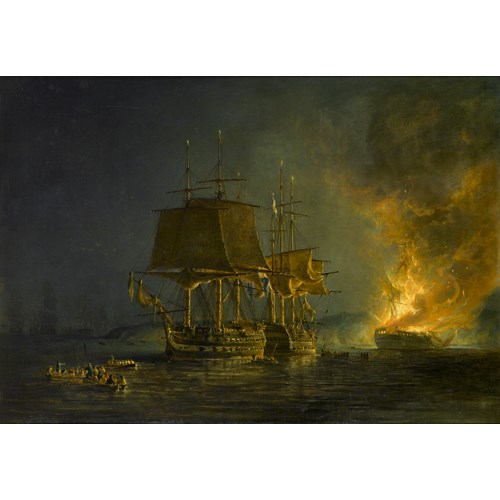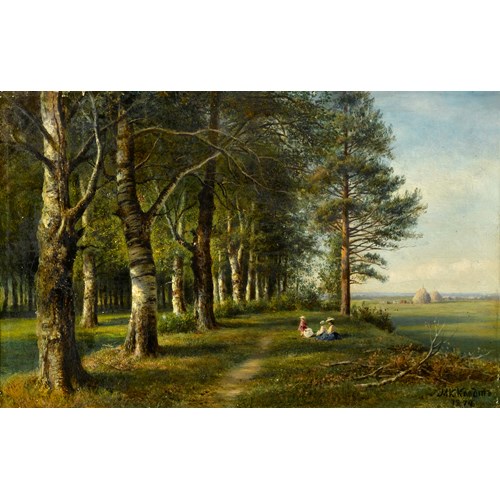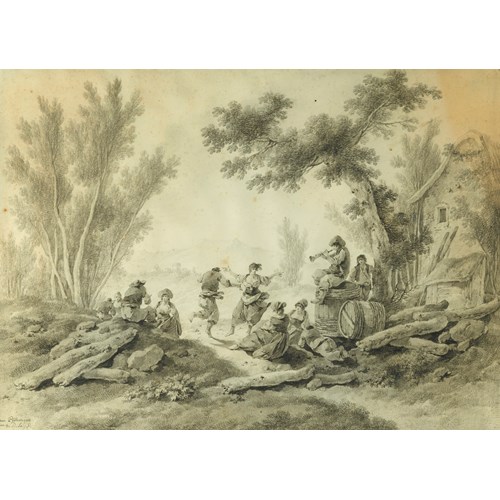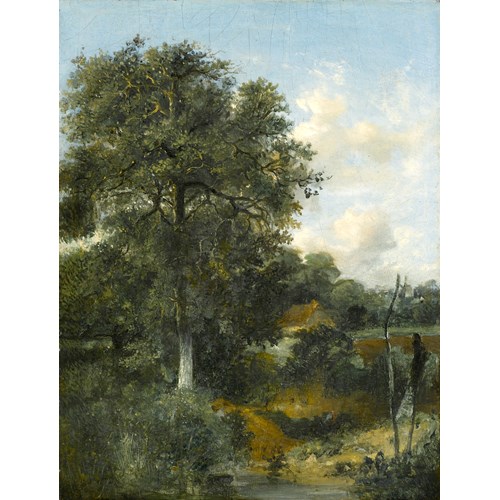Thomas Wyck
An Italian Courtyard with a Gateway and Seated Figure
Period 1600-1750, 17th century
Origin The Netherlands
Medium Brush, Grey wash, Indications in black chalk
Dimension 20.8 x 20.1 cm (8¹/₄ x 7⁷/₈ inches)
An Italian Courtyard with a Gateway and Seated Figure like many of Wyck’s compositions is cropped to give the scene greater visual immediacy, with the back wall of the courtyard providing a structure against which to place the other features. The eye is drawn initially to the centre of the image, where a gate stands partially open, one of its doors in shadow and the other bathed in sunlight. To one side of the gate is the corner of a loggia where an artist sketches in the shade, an unusual yet charming inclusion in this work. His figure and clothing are indicated by a few broad sweeps of the brush. On the other side of the gate, a hut with a roof of curved terracotta tiles and square windows with shuttered windows gives the scene a particularly Italian air, as do the heavy stone blocks of the crumbling arch overgrown with foliage and the further arched doorway and window behind.
Wyck’s training most likely took place in Haarlem although the details are not known. His presence in Italy was noted in 1640 by a document stating that a ‘Tommaso fiammingo, pittore’ (Thomas the Fleming, painter) resided in the Via della Fontanella in Rome1. By 1642, he had returned to Haarlem where he was enrolled in the Guild of St. Luke. Wyck’s compositions during his period in Rome show that he was aware of the late works of Andries Both and also those of Pieter van Laer (‘Il Bamboccio’), after whom he structured his characteristic courtyard views. The influence of Jan Asselijn is also very apparent, although Wyck tended to apply his washes in a broader, flatter manner, and was also less theatrical in the way he chose to capture the intense Italian sunlight. Towards the end of his career, Wyck began producing works typical of Dutch genre painting, differing significantly from his Italianate works, although retaining some earlier compositional devices. During the 1660s Wyck travelled to London, where he painted views of the city before the Great Fire of 1666. He was followed there by his son Jan Wyck, who remained in London and greatly contributed to the development of English sporting painting.
1 A. Busiri Vici, ‘Porti, piazzette, casolari di Roma e dintorni di Tomaso G Fiammingo’, L’Urbe, xli/4, 1978, pp. 9-14
Period: 1600-1750, 17th century
Origin: The Netherlands
Medium: Brush, Grey wash, Indications in black chalk
Signature: Bears various inscriptions in pen and brown ink, verso, mostly illegible, but including the word ‘Pynacker’, and inscription in red chalk: ‘W....m’.
Dimension: 20.8 x 20.1 cm (8¹/₄ x 7⁷/₈ inches)
Provenance: Count Gregory Sergeyevitch Strogonoff (L.550);
bears another unidentified collector’s mark (not in Lugt);
Sale, Amsterdam, Christie’s, 14 November 1988, lot 132.
More artworks from the Gallery









